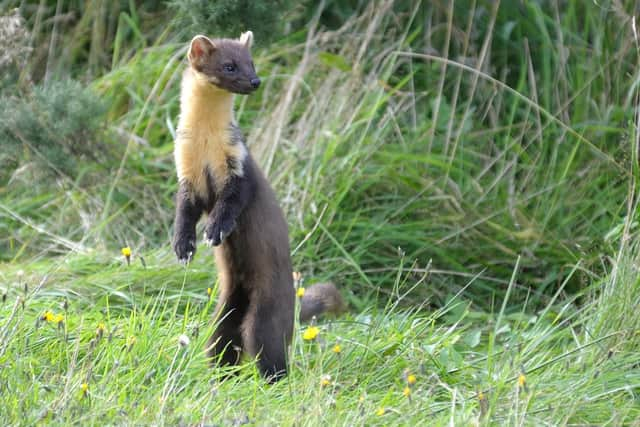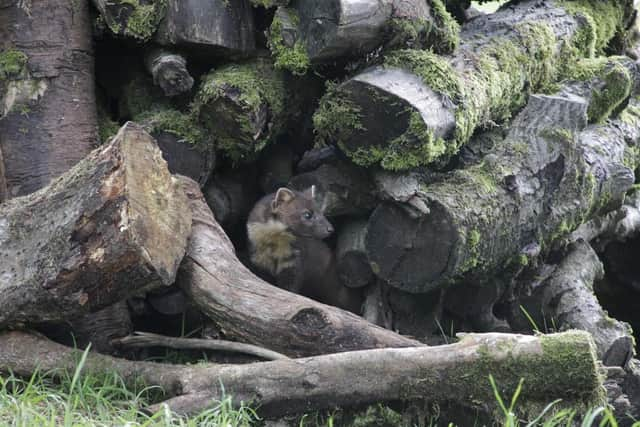Rare wildlife spied near Glasgow after nature sites restored
Cumbernauld Living Landscape (CLL) has been working with local groups to improve more than 260 hectares of natural habitat at nine nature reserves around Cumbernauld, helping to boost biodiversity and enhance outdoor opportunities in the area for people.
CLL aims to improve accessibility to green spaces, connect young people to nature and raise awareness about the health and well-being benefits getting outside can bring.
Advertisement
Hide AdAdvertisement
Hide AdOver the course of the project, creatures previously absent from the sites have begun to re-appear in the area - including rare species such as pine martens and red kites.
Jennifer McNulty, project manager at Cumbernauld Living Landscape, said: “The team and I could not be happier with the results of the restoration project so far.
“It’s great that the people who live in and visit Cumbernauld have native Scottish wildlife on their doorstep.
“We’re helping to turn Cumbernauld into a green network for wildlife, a place where species can move around the town and beyond using the green corridors of woodland, wetlands and grasslands the project is developing.”


The work of CLL, led by the Scottish Wildlife Trust, has been commended by the team at the Scottish Land Commission’s MyLand.Scot campaign – an initiative that aims to raise awareness of the role and benefits land can play in everyday life.
“The way we own and use land influences many parts of our everyday lives,” said Hamish Trench, chief executive of the Scottish Land Commission.
“Cumbernauld Living Landscape is an excellent example of how bringing the community together to take an active role in how the land is used can transform an area – and all in a sustainable, self-sufficient way.


“It is great to see how the project continues to provide a positive impact in the Cumbernauld area.
Advertisement
Hide AdAdvertisement
Hide Ad“Through MyLand.Scot, we want to raise awareness of the role and benefits land can play in everyday life in Scotland – to encourage people to get involved in conversations about land and take action in their local area.”
A message from the Editor:
Thank you for reading this article. We’re more reliant on your support than ever as the shift in consumer habits brought about by coronavirus impacts our advertisers.
If you haven’t already, please consider supporting our trusted, fact-checked journalism by taking out a digital subscription.
Comments
Want to join the conversation? Please or to comment on this article.
